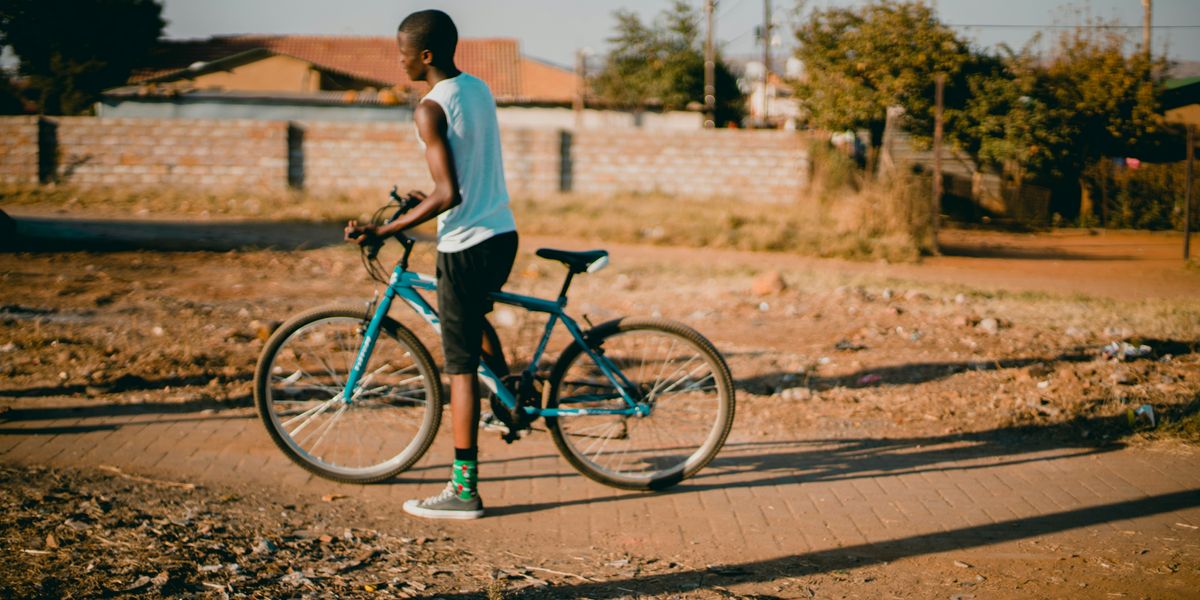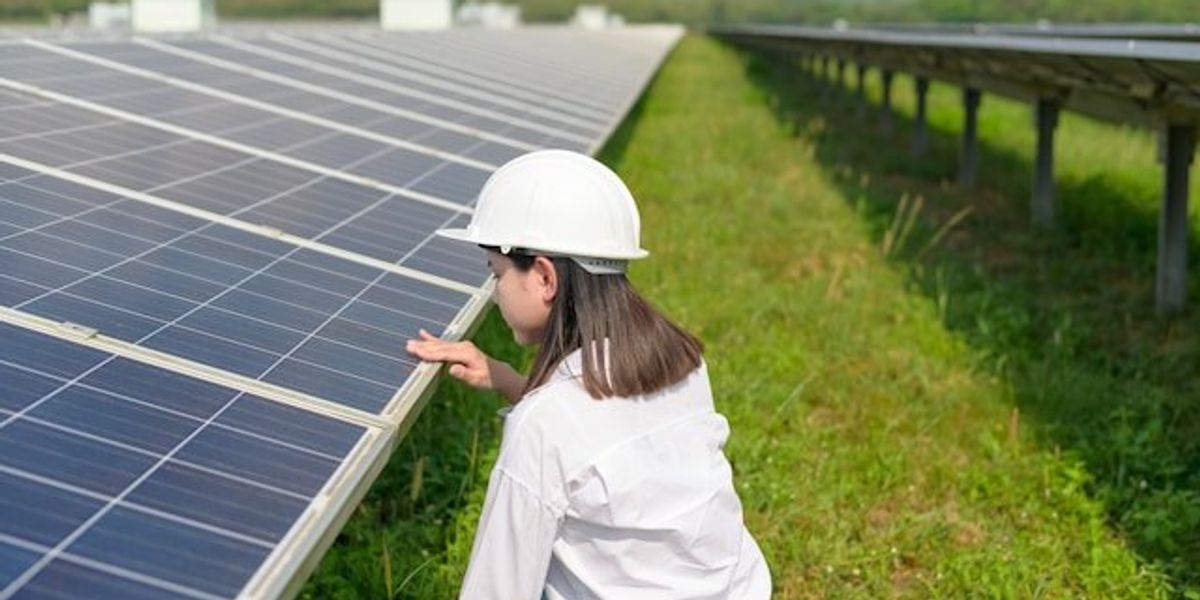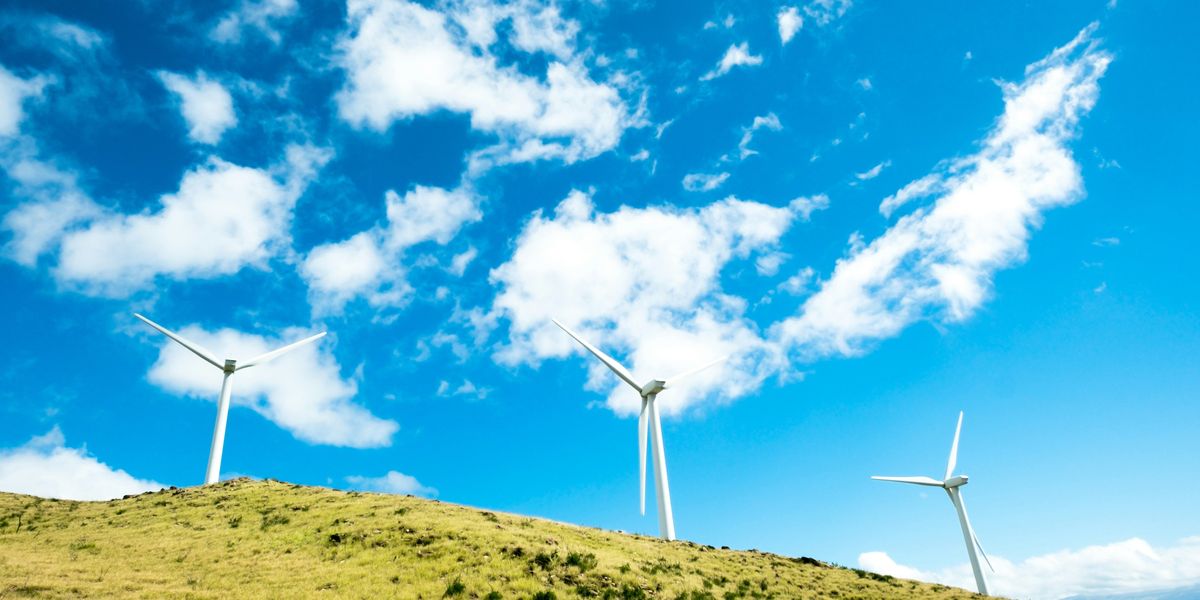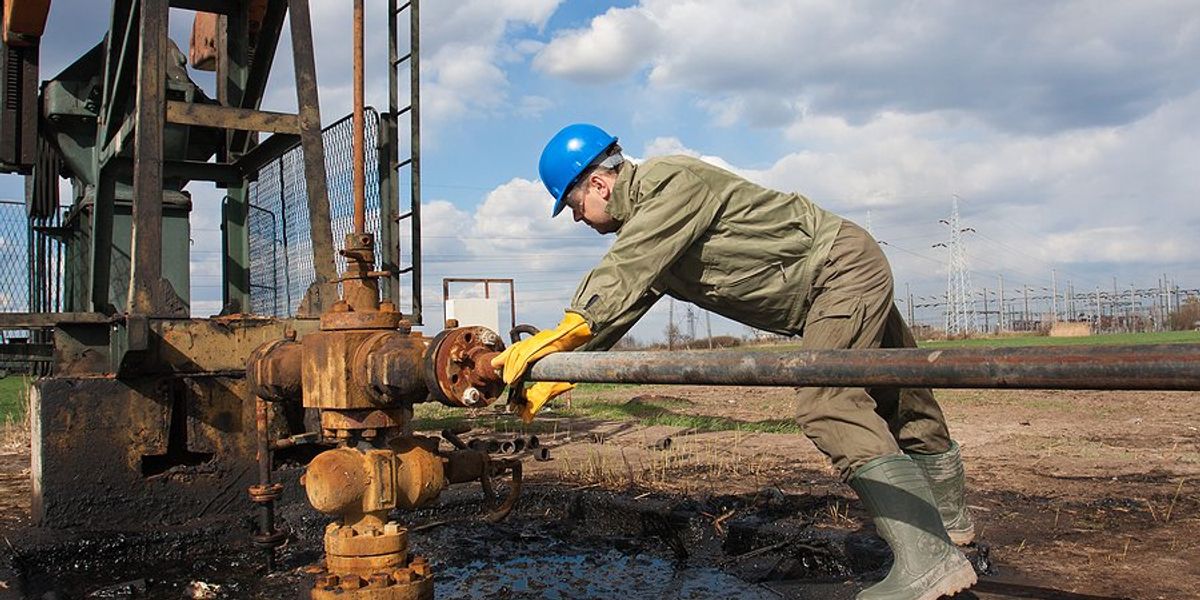altered_sex_ratio
Climate change is disrupting the birds and the bees.
Over the last two decades, scientists have found that warmer temperatures are quietly spoiling the mood, making it harder for plants and animals to reproduce.
By Claire Asher
8 August 2017
Our changing climate seems set to disrupt just about everything. From rising sea levels to ocean acidification, the list of negative consequences from climate change is endless. But one area that often goes unmentioned in the climate change discussion is sex.
Over the last two decades, scientists have found that warmer temperatures are quietly spoiling the mood, making it harder for plants and animals to reproduce.
Here are five ways that climate change is ruining sex lives.
It’s a numbers game
While humans and many other animals determine sex genetically, many reptiles and some fish use the incubation temperature of the eggs to set the gender of their offspring. This means that changing global temperatures could alter the ratio of sexes produced, making it harder for these animals to find mates.
Eastern three-lined skink females can partially compensate for temperature increases by digging deeper nests and laying earlier in the season. Nevertheless, according to a study published in 2009, their nests still warmed by 1.5C over 10 years. This shifted the sex ratio towards females.
Not every species is as badly affected. Australian water dragon females have been shown to buffer temperature differences of 4C by nesting in sunnier or shadier locations. When it comes to climate change, behavioural flexibility is often a big advantage.
Warmer temperatures are quietly spoiling the mood, making it harder for plants and animals to reproduce
In the plant world, temperature can influence sex ratios in more subtle ways. For example, the tobacco root plant, which lives in alpine meadows in North America, has been producing ever more male plants over the last 40 years. This may be due to reduced water availability, since females require more water to develop. So far, the extra males have actually boosted seed production, but if the trend continues, the lack of females could eventually leave male tobacco roots feeling a little lonely.
Meanwhile, the majority of the world’s sea turtles use temperature to set the sex of their offspring. “Embryos are laid with no gender,” says Graeme Hays of Deakin University in Australia. “They can develop into males or females.”
Warmer eggs develop into females, cooler eggs into males. “Temperature during the middle third of incubation controls the sex,” says Hays, by switching on and off the genes that trigger development into either a male or a female.
The difference between male and female is just a couple of degrees. That means even slight changes in the climate could skew the sex ratio, making males harder to find. Incubation temperatures above 29C are predicted to produce increasingly female-biased clutches.
There is evidence that this shift is already underway. Over the last century, the sex ratios of green turtles, hawksbill turtles and leatherback turtles have become increasingly sex-biased. By 2030, the percentage of male green turtles produced has been predicted to drop to just 2.4%. “All else being equal, a warming climate will produce more female sea turtle hatchlings,” says Hays.
The difference between male and female is just a couple of degrees
But his research suggests that all things are not equal. High temperatures also increase mortality in sea turtle embryos, so female embryos are less likely to survive. Combine this with the fact that male sea turtles can mate more frequently, and with many females each season, and the impact on reproduction may not be as severe as first predicted.
Still, Hays warns that this is only true up to a point. Temperatures above 35C would produce such skewed sea turtle clutches and low hatching success that populations would struggle to survive. “There are many places where a 3C temperature rise would lead to extinction of sea turtle populations,” says Hays.
One solution for sea turtles and other reptiles with temperature-based sex determination is to breed at different times of year. This is called a “phenological shift”. “Earlier nesting may mean that sea turtles avoid incubation conditions that are too hot,” says Hays.
Timing is everything
Phenological shifts are common, because many animals use environmental cues like temperature and rainfall to time key events like migration, flowering and breeding. Climate change is changing the timing and strength of the seasons, and as these cues change, the annual ebb and flow of the natural world is being disrupted.
In fact, one of the first pieces of evidence for the effect of climate change on living things was the discovery that plants are flowering earlier and earlier each year. In 2002, a landmark study showed that 385 British plant species were flowering on average 4.5 days earlier than in the 1990s. The same story is playing out across the globe: a 2008 meta-analysis looked at 650 temperate plant species in Europe, Asia and North America, and found that spring flowering had advanced by 1.9 days per decade on average.
The biggest concern is that plants and their pollinators might respond differently to climate change, leading to a mismatch that could significantly affect plant reproduction. For instance, in Japan the flowering of the plant Corydalis ambigua has advanced faster than the emergence of its bumblebee pollinators, resulting in a mismatch that reduces seed production in years with an early spring. Such mismatches could have a major impact on certain crop plants.
Happily, a 2011 study found that most plants and pollinators are responding to climate change in a similar way, maintaining their synchrony despite large changes in temperature.
Autumnal events, such as fruiting and leaf dropping, have also been delayed. This means that plants are now flowering and growing for longer. That sounds like a good thing, and climate change is predicted to increase yield for some crops in some regions. But overall, the expectation is that climate change will make our crop plants less productive, by speeding the ageing process and reducing fertility.
It isn’t just plants that need to time reproduction carefully. Birds are also changing their annual calendars. Many are now breeding and laying eggs earlier in the year. For some species this may be a good thing, because hatching earlier means the chicks have longer to develop. For pied flycatchers, warmer springs mean larger clutches and more chicks surviving to fledge.
For others, climate change may shorten the already narrow window of opportunity to breed.
Brunnich’s guillemots live in the Arctic Ocean, off the coast of Canada. They time their breeding based on summer ice cover, but ice cover is strongly affected by winter and spring temperatures, and has been retreating since the 1970s. Guillemots in the south of their range now breed earlier, but their chicks grow more slowly and are less likely to survive. In the longer term, warmer temperatures and reduced sea ice may extend the breeding season for birds in the north, but more southerly birds could see their breeding window close early.
Changing environmental cues might also influence how animals court members of the opposite sex
More serious problems may be in store for birds that cannot keep up with the changing climate. The relative timing of hatching in relation to the abundance of food is key to successfully raising young. In the Netherlands, peak caterpillar abundance occurred nine days earlier in 1995 than in 1973, but great tits did not lay their eggs any earlier. This could mean that the chicks get less food than they otherwise could, worsening their chances of survival.
Even birds of prey are being affected by mismatches. Eurasian sparrowhawks have found that prey species like common blackbirds and house sparrows are breeding earlier, and the sparrowhawks have only partially kept pace. In the 1970s, the sparrowhawks’ prey were most common when chicks were around two weeks old, but by 1997 it was happening when they were just six days old. At this age, the chicks are too young to make use of this abundance, and may suffer from food shortages later in development.
Bending the rules of attraction
Changing environmental cues might also influence how animals court members of the opposite sex.
The decorations, displays, dances and songs that animals use to attract a mate are all heavily dependent on the environmental conditions the animal lives in. That is why they became attractive in the first place, says Carlos Botero of Washington University in Saint Louis.
“For example, female birds often find bright colours attractive, and the building blocks that males use to produce these colours are often obtained from their diet,” says Botero. “When a female sees a brightly-coloured male, she is indirectly seeing a potential mate that is clearly capable of finding enough food to not just maintain himself but to have extra to spare on looks.”
Across the animal kingdom, lavish looks and elaborate displays act as honest signals of the quality of a mate, helping females to choose the right parent to give their offspring the best genetic start in life.
But environmental changes can break the link between appearance and quality. A study published in January 2017 found that warming spring temperatures had changed the course of evolution for collared flycatchers. Previously, males with the largest white head patches attracted more females, but during the 34-year study a 1.5 °C rise in average spring temperatures completely reversed this pattern.
Males with large head patches, which previously had the highest survival rates, had the lowest survival rates at warmer temperatures. Their head patch no longer meant anything in terms of quality. As a result, males with smaller patches now enjoy their pick of the ladies.
Warmer climates seem to have a tendency to make animals less faithful
Climate change seems to be levelling the playing field among grey seals. Between 1996 and 2004, lower rainfall forced females to venture out of their normal foraging areas, giving subordinate males the opportunity to mate. The proportion of males in the colony that bred increased by 61% in wetter years. This in turn has increased the population’s genetic diversity, which could help the seals cope with climate change.
For other species, changes in the timing of events have left room for exaggerated sexual appearance.Male barn swallows have grown ever longer tail feathers since the 1970s, as a result of arriving early at their breeding grounds. Females have not changed the timing of their migration, so males now have extra time to look their best before the females arrive. This seems like good news for the males, but it may make it harder for females to distinguish between mates of different quality, again altering the course of evolution.
These studies offer tantalising glimpses into how climate change is putting the sexual lives of animals into disarray. However, the long-term consequences of these shifts are difficult to predict and are likely to be highly species-specific.
A mate for life?
Warmer climates seem to have a tendency to make animals less faithful. In a 2012 study, Botero studied monogamy in 122 species of bird. He found that “in places where environments change more frequently and unexpectedly, apparently monogamous females tend to hedge their bets by mating with more than one partner on the side”.
These “extra-pair relationships” become increasingly frequent as annual climatic cycles become more variable. Female birds “are also more likely to terminate bonds with partners that are no longer yielding the benefits they expected”, says Botero. He argues that these “divorces” and “affairs” may become more common as the climate becomes less predictable.
Increasing infidelity may also be on the cards for mammals like alpine marmots. A 2016 study led by Aurélie Cohas of Claude Bernard University Lyon found that, between 1992 and 2013, the frequency of extra-pair litters increased as spring arrived earlier and winter snowfall increased. This effect was largely due to improved survival as alpine temperatures rose. “The number of pups, as well as their survival, is highly linked to the climatic conditions they endure during hibernation,” says Cohas.
Pups that survive the winter will tend to stick around and help the family raise the next litter. In turn, “females are more likely to produce extra-pair litters when there are more subordinates in their family” to help, says Cohas. “We could likely expect species living in alpine, snowy and cold habitats to be more unfaithful in the future.”
Climate change may shorten migration distances, and could actually lead to an increase in monogamy and bi-parental care in some migratory birds
Why does this happen? “Climate influences mating systems in mammals by constraining the resources available, constraining movement, and changing the costs involved for animals to meet sexual partners,” says Cohas. “Any change in climate that will relax these constraints will likely influence their mating system.”
In migratory shorebirds, there is a link between the distance of migration and whether both parents help care for the young. This “bi-parental care” is usually restricted to short-distance migrants, because birds that migrate long distances cannot rely on both parents to make the long journey, so females tend to raise the offspring alone. Climate change may shorten migration distances, and could actually lead to an increase in monogamy and bi-parental care in some migratory birds.
Similarly, among shorebirds called plovers, males have been shown to invest more effort in helping to raise young chicks as the climate warms and becomes more unpredictable. This flexible behaviour may help these birds buffer some of the harsher effects of climate change on chick survival.
The heat-wave slump
Finally, climate change might even impact on our own sex lives.
A 2015 working paper by the National Bureau of Economic Research found a correlation between hot temperatures and low birth rates in the USA. A single hot day when temperatures went over 26C reduced birth rates nine months later by 0.4%, equating to over 1,100 births. It isn’t clear whether this was due to a reduction in the frequency of sex – after all, sometimes it is too hot to do anything – or due to reduced fertility at high temperatures.
The authors offer a possible solution to this problem: air conditioning. But air conditioning needs power to run, and if that power comes from burning fossil fuels we would end up warming the climate even more.
A 2016 study in Japan found a correlation between extreme temperatures, whether hot or cold, and increasingly sex-biased miscarriages, producing a female-biased sex ratio in new-borns. Since climate change is predicted to increase the frequency of extreme weather events, in theory it could affect human fertility t
The oceans can’t protect us anymore—here’s why.
Our waters have borne the brunt of global warming for decades, but dying corals, extreme weather, and plummeting fish stocks are signs that it can handle no more.
Our waters have borne the brunt of global warming for decades, but dying corals, extreme weather, and plummeting fish stocks are signs that it can handle no more.
View Images
A local fisherman and his son travel in a traditional outrigger canoe above a coral reef in Papua New Guinea's Kimbe Bay. Almost all coral reefs may experience bleaching by 2050, the new report says.
PHOTOGRAPH BY DAVID DOUBILET, NATIONAL GEOGRAPHIC CREATIVE
HONOLULU, HAWAII—The oceans, which have borne the brunt of most of global warming, have finally hit their limit as dying corals and plummeting fish stocks signal that the seas are at a dangerous tipping point, according to the broadest ever look at the issue. And people are already experiencing direct consequences, such as more extreme weather events, including hurricanes, says the report, released by the International Union for Conservation of Nature.
“We all know the oceans sustain this planet,” says Inger Andersen, IUCN’s director general, “yet we are making the oceans sick.”
Since 1970, global waters have been a “powerful ally” against global warming, absorbing 93 percent of the carbon dioxide released by human activities. (See “Ocean Warming Faster Now Than in 10,000 Years.”)
“Without this oceanic buffer, global temperature rises would have gone much, much speedier,” Andersen said Monday at the IUCN World Conservation Congress.
You Might Also Like
Alaska Has Finally Been Mapped as Precisely as Mars
World’s Oldest Fossils Discovered Due to Climate Change
Watch Bubbling Alaska Lakes Catch on Fire
To put it bluntly, if the oceans weren’t there to protect us, our lower atmosphere would have already heated up by 36 degrees Celsius, says Dan Laffoley, principal advisor of marine science and conservation for IUCN’s Global Marine and Polar Programme.
View Images
The sex ratios of sea turtles, such as this hawksbill, may shift as the oceans warm. A turtle hatchling's sex is determined by the temperature at which the eggs develop in the nest, with higher temperatures favoring the production of females.
PHOTOGRAPH BY DAVID DOUBILET, NATIONAL GEOGRAPHIC CREATIVE
Troubled Waters
Now, as global warming continues apace, the ocean will continue to warm by between 1 to 4 degrees Celsius by 2100, Andersen says. “In an ecological timescale, 2100 is tomorrow.”
Eighty scientists from 12 countries contributed to the “most comprehensive, most systematic study we’ve ever undertaken on the warming of the oceans,” Laffoley says.
“We’ve looked from microbes to whales, from pole to pole, we’ve looked at all the major ecosystems, including the deep ocean," he says. (See “Oceans Are Losing Oxygen—and Becoming More Hostile to Life.”)
One of the most worrying phenomena is that entire species populations—such as plankton, jellyfish, turtles, and seabirds—are moving toward the poles by up to 10 degrees latitude, taking up residence in waters previously too cold to support them. That’s five times faster than land animals are migrating north.
In particular, fish species moving out of their known range could destabilize the world’s fisheries. In Southeast Asia, for instance, as fish leave their homes, marine fisheries may fall by up to 30 percent by 2050, the report says. And in East Africa and parts of the Indian Ocean, where warming has already killed coral reefs, fish species have also died, taking away many fishermen’s livelihoods. (See “As Oceans Heat Up, a Race to Save World's Coral Reefs.”)
The outlook is particularly bleak for coral reefs, also a mainstay of ecotourism for many countries—some areas have already lost up to half of their reefs, according to the report.
The latest models predict that by 2050, warmer oceans will bleach nearly all the world’s reefs. So-called bleaching which occurs when a coral’s symbiotic algae—the cause of their vibrant colors—depart en masse, leaving the coral to likely starve. (Related: “93 Percent of the Great Barrier Reef Is Suffering.”)
People who live near or interact with the ocean could also be at increased risk of illness, as warmer oceans quickly spreads pathogens, such as cholera-carrying bacteria and algal blooms that can cause neurological diseases.
And as the ocean warms, so will severe weather, such as hurricanes and typhoons, says Andersen, who noted the rare double hurricanes that recently skirted Hawaii.
According to the report, the number of severe hurricanes have risen by up to 30 percent per degree of global warming, as storms feed on warm water. El Niño, the periodic warming of water in the Pacific Ocean, has also intensified over the past two decades.
View Images
Jellyfish (pictured, an animal off Queensland, Australia) are predicted to change habitats—for instance, some species may migrate to deeper waters.
PHOTOGRAPH BY DAVID DOUBILET, NATIONAL GEOGRAPHIC CREATIVE
Moving Forward
So “how are we going to stop going to hell in a handbasket?” asks Greg Stone, executive vice president at the nonprofit organization Conservation International and a marine expert.
He suggests treating the ocean like a sick patient that has a temperature. To lower the temperature, that requires stopping polluting the atmosphere with carbon—of course, no easy task.
Another solution, however, is creating marine protected areas—in essence, “telling the patient to rest. Then the immune system has a chance of fighting,” says Stone, who was not directly involved with the new report.
“There’s good news on that front,” he adds. Just this week, President Obama quadrupled the size of Hawaii’s Papahānaumokuākea Marine National Monument. The no-fishing zone is now 582,578 square miles, an area larger than all the national parks combined.
The scientists also offered recommendations, such as planning for the imminent blow to regional economies. For instance, if kelp forests die off—which is already taking place—countries need to know what will happen to their fisheries.
Difficult as all of this may sound, it’s on us, says Carl Gustaf Lundin, director of the Global Marine and Polar Programme.
“There’s no doubt in all our minds that we’re the cause of this,” he says.
“We know what the solutions are—and we need to get on with it.”
Join the conversation at the #IUCNCongress with #BoldSteps
Follow Christine Dell'Amore on Twitter.












